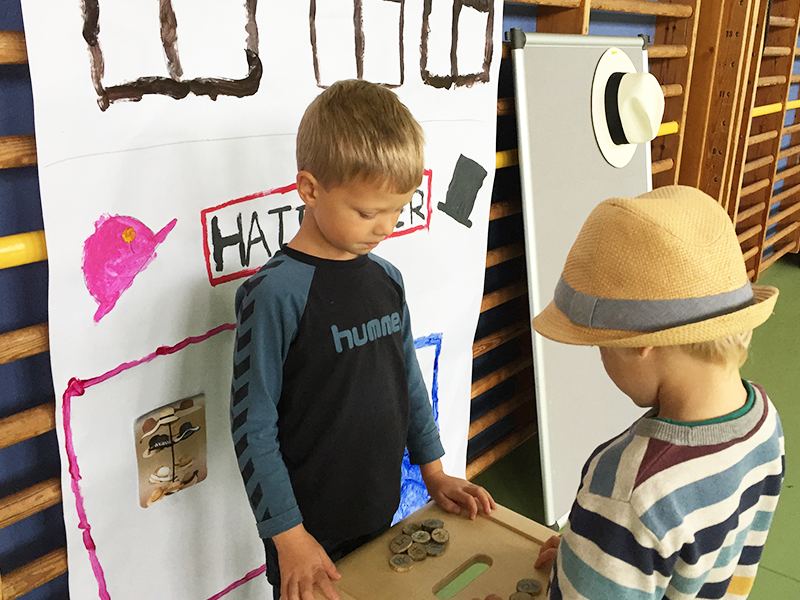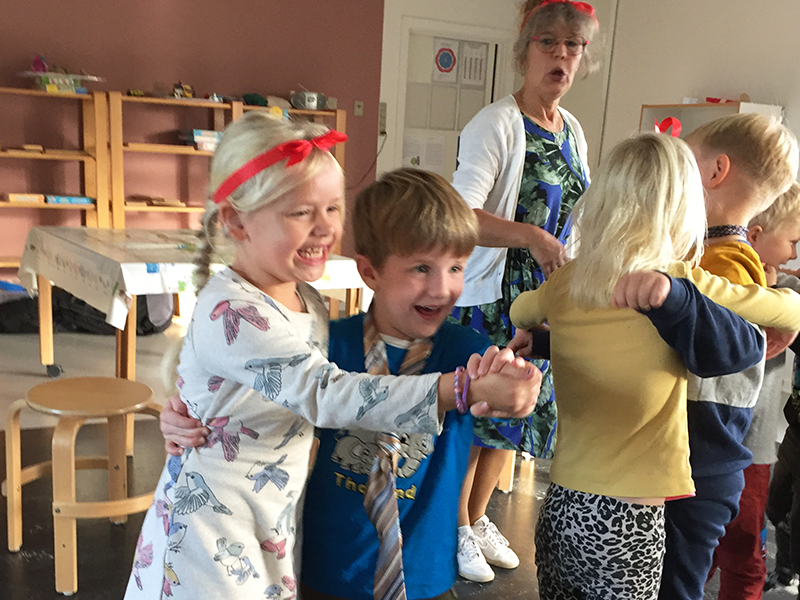STORYTELLING, DANCE, PLAY
Region: South
Municipality: Vejle
By: Vejle
Year: 2020
Artist: Jacob Knudsen
Day care: Uhrhøj Children's Home
The starting point for our participation in LegeKunst was motivated by a desire to focus on the processes that ensure children's active participation. The staff had to learn to follow the children's tracks, so that the children's processing of what they experience is given more space and everyone experiences being able to contribute actively, regardless of previous experience.
All children's contributions must be met with acceptance and curiosity, so that they experience real involvement and participation. This way of working requires staff to dare to let go of control and to be responsive and supportive. They must dare to grope, to fail and to unleash their imagination when they are with the children and they must practise seeing the children as equal aesthetic actors in the work with art and culture.
As part of that, we wanted to see if we could move our pedagogical work away from something that is very specific to something that resembles pedagogical education work. And away from a focus on the project itself and towards more attention to the process.
The more concrete starting point was a project on the 1950s and 60s: Travelling through time. The idea came from our experience that children ask a lot of questions about when you are old, when you are going to die, whether the staff have parents, siblings, etc., and that children are not always aware that their grandparents are their parents' parents. At the same time, we found that the children were preoccupied with talking about what did and did not exist in the "old days".
It was therefore obvious to take up the subject of time and use a time period when the children's grandparents were children (1950s and 1960s).
In practice, it became a course and a little story about the travelling salesman Mr. Knudsen from the merchant company "Everything New", who came by with a suitcase full of old things that fit our chosen themes. This led to the examination of the objects and a lot of different games, both old games and games invented by the children.
It also led to our educators playing travelling salesman themselves and setting up their own dance school for the children. The famous Mrs Halles dance school, where you could learn to waltz and rock'n'roll - and where the children had to invent new dances.
How has it gone in relation to the overall wonder?
It has been exciting to be part of the project and has contributed a lot to our pedagogical development. We dare much more, we have become better at seizing the moment and there is more inclusiveness in our work. We no longer work so much from a fixed template and are much better at deviating from the plan.
It has been exciting to have a researcher involved, which has helped in relation to the work with reflections. And it has been good that it was done as action research with a researcher who was not afraid to play along.
What's next? What are we still curious about?
It has also helped us to identify areas where we still want to improve and therefore focus on in the future.
As an adult, you have to have something to say when you participate in children's play. You're not just creating the framework for children's play, you're playing with it.
In order to do this, it is necessary to be able to support the children and help them to develop their play. In practice, this means that the educator must be able to take up different positions along the way.
And what does it really mean to follow the children's tracks? It's easy to get too specific in your thinking when you say you have to follow the children's lead. For example, if you see some children playing with a particular toy and then only take the specific toy as a starting point. It may also be following the children's tracks if you look at the activity from other elements, be it the desire to play with something they have not played with before, the desire to play with others or perhaps a curiosity about things similar to what they are playing with.
So we want to learn more about what it really means to follow the children's tracks and, not least, how to stick to it in a busy everyday life with curriculum themes and fixed routines.
As part of following the children's tracks, there is also the matter of getting good at letting the children participate in activities from different positions. Where there can be room for both the very active child and the child who wants to be observant before participating.
What do we do if a child withdraws from the gathering or play? How do we ensure attention is paid to this and are there any low-tech pedagogical ways we can do this? In this context, we think that group dynamics are a somewhat overlooked factor that we want to be good at managing.
click on the picture to see a larger version




